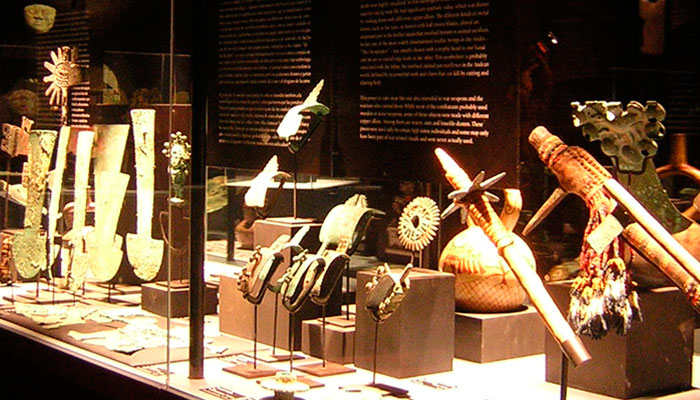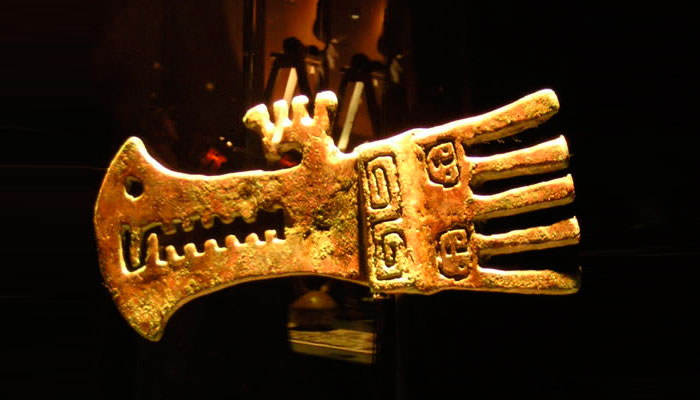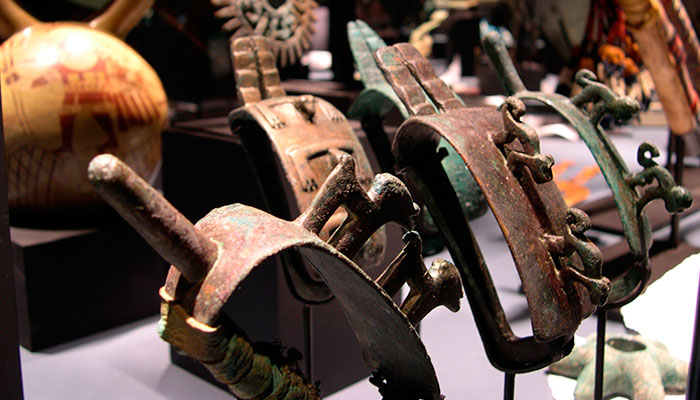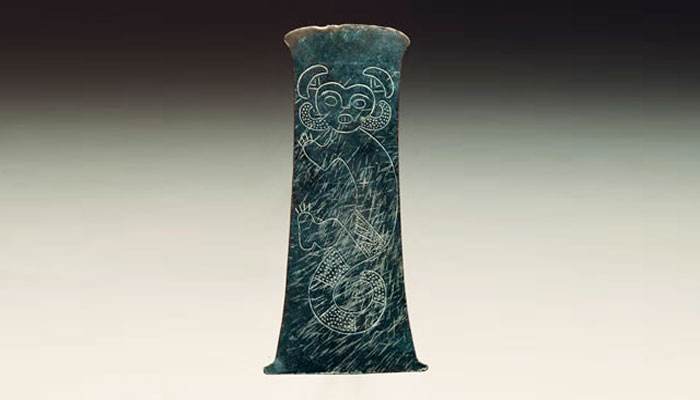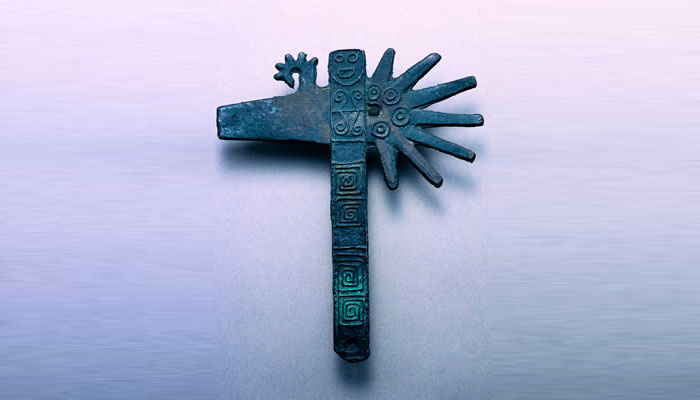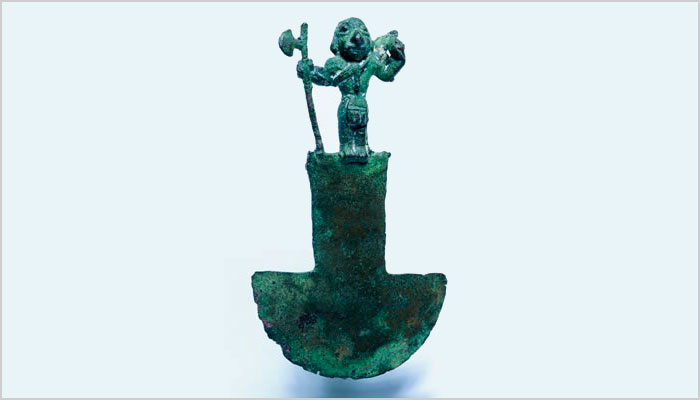The Art of Copper in the Andean World – 2004
- From stone to jewel
- Metal tools
- Chromatic palette of copper
- Metallic sounds and glitters
- Bronze bells
- Metals for taking away life
- Copper on the shaman’s altar
- Copper in the andean iconography
- Metallic bodies
- The face of death
- Food for men
- Food for the gods
- The power of the cailles
- Epilogue
- Galería de fotos
Metals for taking away life
In many Andean societies the power and prestige of the authorities depended on their control over life and death, so that the ability and act of producing death were highly ritualized. In this ideological context, the instruments used for taking away life had significant symbolic value, which was shown by making them with different copper alloys. The different kinds of metal knives, such as the tumi, or, knives with half moon blades, played an important part in the fertility rituals that involved human or animal sacrifices. In fact one of the most widely disseminated mythic beings in the Andes – “The Decapitator” – was usually shown with a trophy head in one hand and an axe or curved edge knife in the other. This symbolism is probably associated with the feline, the mythical animal par excellence in the Andean world, defined by its powerful teeth and claws that can kill by cutting and clawing flesh. This power to take away life was also extended to war weapons and the warriors who carried them. While most of the combatants probably used wooden or stone weapons, some of these objects were made with different copper alloys. Among them are maces, axes and knuckle-dusters. These pieces were used only by certain high status individuals and some may only have been part of war-related rituals and were never actually used.




































